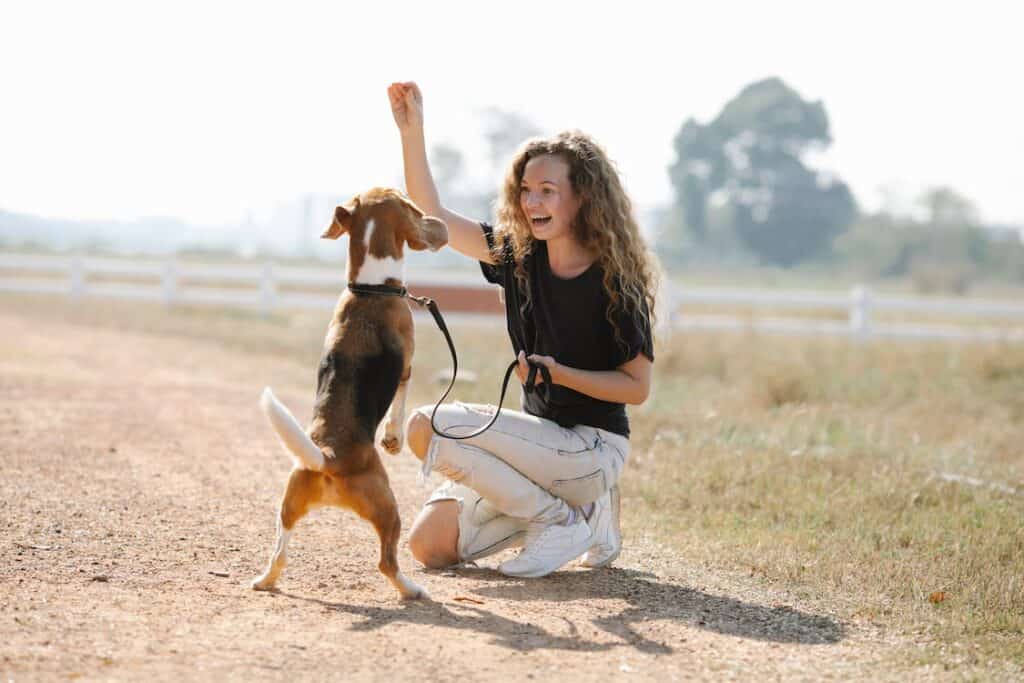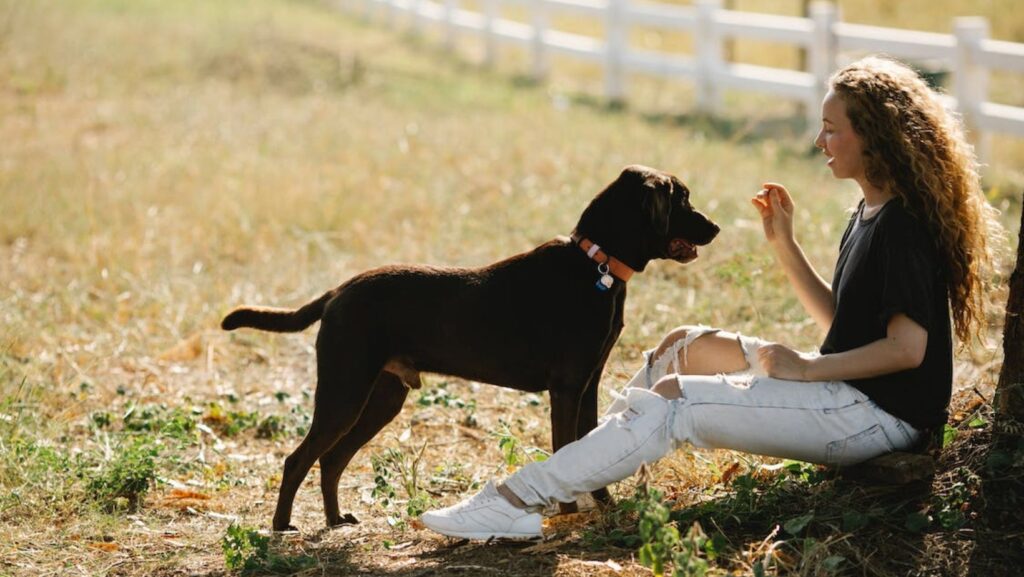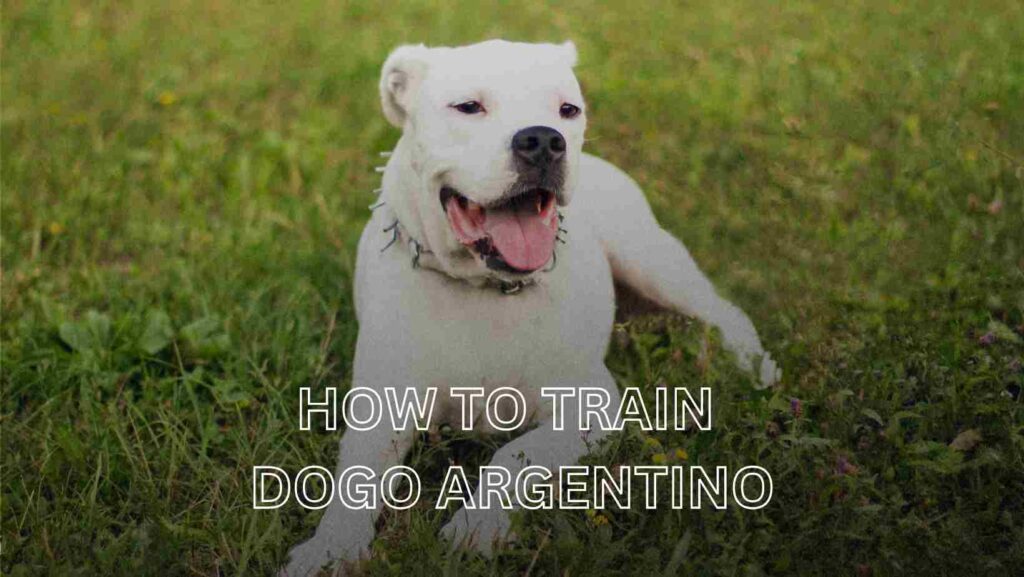How important is it to properly fit a dog’s collar?
When it comes to ensuring your furry friend’s comfort and safety, one essential aspect is finding the right fit for their collar. Dog collars serve multiple purposes, from holding identification tags to providing a means for leash attachment. However, if a collar is too tight, it can lead to various health issues and discomfort for your beloved pet. In this article, we will explore the appropriate fit for a dog’s collar and the potential dangers of using a collar that is too tight.
Understanding Dog Collar Sizing:
Getting the measurements right for a perfect fit.
Before you can determine how tight a dog’s collar should be, it’s crucial to measure their neck accurately. Using a flexible tape measure, wrap it around the base of your dog’s neck, leaving a little room for comfort. This measurement will provide you with the appropriate collar size for your dog. Additionally, understanding the different types of collars available, such as flat collars, martingale collars, harnesses, and prong collars, will help you choose the right option for your dog’s specific needs.
Signs of a Too Tight Dog Collar:
Recognizing the signs of discomfort and potential harm.
A collar that is too tight can cause significant discomfort for your furry companion. Keep an eye out for behavioral changes, such as increased anxiety, restlessness, or resistance when putting on the collar. Additionally, if your dog shows signs of difficulty breathing, swallowing, or constantly tries to scratch or rub against the collar, it could be an indication that the collar is too tight. Other visible signs of a tight collar include skin irritation, hair loss, and indentations on the neck.
Dangers of a Tight Dog Collar:
Understanding the potential risks and consequences.
Using a collar that is too tight can have severe consequences for your dog’s health. One of the most immediate dangers is the risk of choking and tracheal damage. When a collar puts excessive pressure on the neck, it can obstruct the airway and make it difficult for your dog to breathe properly. Moreover, prolonged pressure on the thyroid gland can lead to thyroid issues, affecting your dog’s overall health. Additionally, a tight collar restricts blood flow to the muscles, potentially causing muscle damage and discomfort.

Guidelines for Properly Fitting a Dog Collar:
Striking the balance between a snug fit and comfort.
To ensure your dog’s collar is properly fitted, it should be snug enough to prevent slipping over the head but not too tight to cause discomfort. A good rule of thumb is to be able to fit two fingers comfortably under the collar. This allows for proper circulation and prevents excessive pressure on the neck. It’s important to check the fit of the collar regularly, especially as your dog grows or if they gain or lose weight.
Choosing the Right Collar for Your Dog:
Considering factors and selecting the appropriate collar type.
Different dogs have different needs, so it’s crucial to select a collar that suits your dog’s size, breed, and temperament. For small breeds or dogs with neck or respiratory issues, a harness might be a better option as it distributes the pressure more evenly across the chest. Larger or more active dogs might benefit from a martingale collar that provides gentle control without the risk of choking. It’s always advisable to consult a professional dog trainer or veterinarian for guidance in choosing the most suitable collar for your furry friend.
Collar Safety Tips:
Additional precautions for your dog’s well-being.
While a properly fitted collar is essential, it’s equally important to follow certain safety precautions. Ensure proper supervision when your dog is wearing a collar, especially during playtime or interactions with other dogs. Avoid leaving the collar on 24/7 as it allows the skin to breathe and prevents potential rubbing or irritation. Regularly inspect the collar for any signs of wear and tear, and replace it when necessary.
Alternative Collar Options:
Exploring other collar choices for specific needs.
In some cases, traditional collars may not be the best option for your dog. If your dog has a history of neck or respiratory issues, a harness can provide a safer and more comfortable alternative. Harnesses distribute the pressure evenly across the chest and back, reducing the strain on the neck. For added safety, you might consider GPS tracking collars, which allow you to locate your dog in case they wander off. Personalized collars are also a great option for identification purposes, ensuring your contact information is readily available if your dog ever gets lost.
The Importance of Training and Socialization:
Complementing collar use with proper training techniques.
While a collar is a useful tool for control and identification, it’s important to remember that training and socialization play a vital role in leash manners and overall behavior. Teaching your dog loose leash walking techniques and employing positive reinforcement methods can greatly reduce the need for collar corrections. By focusing on building a strong bond with your dog through training and positive reinforcement, you can create a more enjoyable and stress-free walking experience for both you and your furry companion.
Conclusion:
In conclusion, the proper fit of a dog’s collar is of utmost importance for their comfort, safety, and overall well-being. A collar that is too tight can lead to various health issues and discomfort for your furry friend. It’s essential to measure your dog’s neck accurately and choose the appropriate collar size. Signs of a tight collar include behavioral changes, difficulty breathing, and skin irritation. Using a collar that is too tight can pose risks such as choking, tracheal damage, and restricted blood flow. To ensure a proper fit, the collar should be snug but allow you to fit two fingers comfortably underneath. Consider your dog’s size, breed, and temperament when selecting a collar type.
Safety precautions include supervision, regular checks for wear and tear, and avoiding leaving the collar on 24/7. Alternative options like harnesses, GPS tracking collars, and personalized collars cater to specific needs. Training and socialization are crucial for leash manners and overall behavior. By prioritizing your dog’s comfort and safety, you can ensure enjoyable walks and a strong bond between you and your canine companion.
FAQ
How can I tell if my dog’s collar is too tight?
Look for signs such as behavioral changes, difficulty breathing, and skin irritation. If your dog shows discomfort or exhibits unusual behavior while wearing a collar, it may be too tight.
Can a tight collar cause permanent damage to a dog?
Yes, a tight collar can lead to serious health issues and permanent damage. It can cause choking, tracheal damage, restricted blood flow, and muscle damage if left unaddressed.
What type of collar is best for a small breed dog?
Small breed dogs may benefit from harnesses as they distribute pressure evenly across the chest, reducing strain on the neck. Harnesses provide more comfort and control for small dogs.
Are there any specific safety tips for using prong collars?
Prong collars should be used with caution and under the guidance of a professional dog trainer. Proper fitting is crucial, and it’s important to avoid excessive force or prolonged use.
Should I take my dog’s collar off at night?
It’s generally recommended to remove your dog’s collar at night to allow their neck to rest and prevent any potential discomfort. However, make sure your dog still wears identification in case they were to escape during the night.








